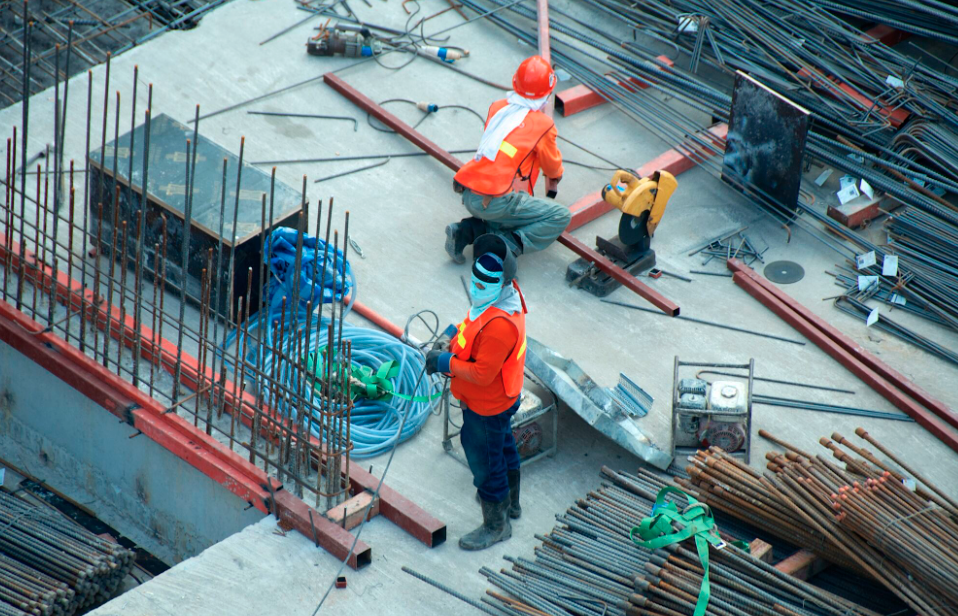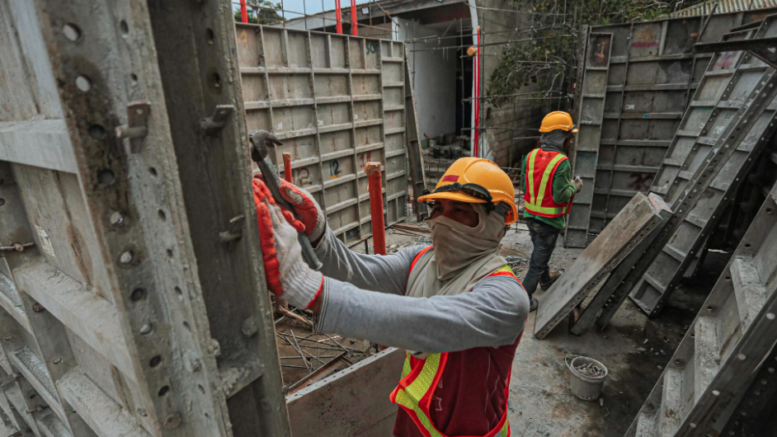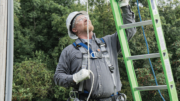There is no doubt that roofing can offer a rewarding career to anyone interested in construction work and not afraid of heights. As highly skilled tradespeople, roofers tend to be sought after and are hardly ever out of a job. Plus, a roofer’s salary or compensation generally reflects their high skill level.
However, all these advantages don’t come without disadvantages. One of the most notable downsides of the roofing profession is the risk that goes along with the job. Personal protective equipment (PPE) can help mitigate the risks roofers are taking on the job. In this article, we take a closer look at how roofers can use PPE to make their jobs safer.
Why PPE Is Crucial for Roofing Professionals

As their job title suggests, roofers and roofing contractors spend their day on top of buildings of varying heights. Whether the crew is installing, replacing, or repairing a roof, their job has one thing in common — the work needs to be done at height.
According to the Bureau of Labor Statistics (BLS), falling from height remains one of the leading causes of workplace fatalities, injuries, and illnesses. When it comes to reasons for fatal work injuries, falls, slips, and trips are only beaten into second place by transportation incidents. For that reason, it will come as no surprise to most readers that roofers have one of the highest rates of overall injuries, illnesses, and fatalities of all occupations across the United States.
In 2021, the roofing profession had a fatality rate of nearly 60 per 100,000 full-time equivalent workers, only surpassed by logging, fishing, and hunting. While fatalities in those professions declined from 2020 to 2021, roofing experienced a marked increase in fatalities between those years.
The increase may be due to construction sites re-opening after the first year of the pandemic and more roofing projects needing to be finished than normal. In any case, the figures show just how important effective protective gear is for roofers. Personal protective equipment, especially fall protection systems, can go a long way toward increasing the safety of your roofing crew.
Understanding the Most Common Hazards
Falling from height is by far the most common hazard for roofers and roofing crews. Where a ground-based construction worker may trip and fall without serious consequences, roofers risk serious injury.
Aside from falling from a height, there are other risks and hazards associated with the profession:
· Exposure to extreme temperatures. While high winds and other inclement weather conditions may prevent roofing work from going ahead, crews usually continue to work even if temperatures are extreme. Exposure to heat and cold can predispose roofers to various illnesses. During the summer, they are also at risk from heat exhaustion or heat stroke.
· Working with hot materials. Hot bitumen remains one of the most cost-effective roofing materials available to contractors today. For those working on roofs, there is always a risk of being burned by it.
· Ergonomic injuries. Roofing work tends to be physically demanding, including heavy lifting, bending, and climbing ladders. Without appropriate procedures and PPE, workers can easily sustain injuries that would force them to stay away from work for days, if not longer.
Different Types of PPE for Roofing Safety
Fall protection systems are among the key components of PPE for roofing workers. The Occupational Safety and Health Administration (OSHA) requires anyone working at heights greater than 6 feet to have access to a fall protection system.
Not only should those working on high rises be protected with professional safety equipment. Roofers repairing or installing a residential roof deserve the same high level of protection and consideration.
What type of system employers provide depends on the nature of the job and any particular risks that roofers are being exposed to. Guardrails may work in some places, while more personalized systems, like harnesses, are required in others. The idea behind personal fall protection systems is to prevent a fall in the first place or arrest the employee’s fall before a serious injury can occur.
PPE and Accident Prevention in the Roofing Industry
We started this article by highlighting the risks roofers are facing daily on their job. PPE, including fall protection, can minimize those risks and prevent injuries as well as fatalities.
The impact on the roofing industry is manifold:
· Roofing workers enjoy a safer place of work and limit the risks they take on the job.
· Employers benefit from increased productivity thanks to fewer stoppages and delays caused by injuries.
As a result of issuing workers with suitable PPE, injury risks are minimized and projects are more likely to be finished on time and within budget.
Best Practices for Selecting and Using PPE
How can employers and their safety teams choose the most suitable PPE for roofers? First, they need to match the equipment to the job. Installing guardrails, for example, could be a great way of protecting seasoned roofers and newcomers to the job. But it may simply not be feasible to have guardrails on every roof in all weather conditions.
Personal fall protection is often more suitable, and roofers can use their equipment on various sites. Having said that, some personal fall protection systems are relatively complex. Without specific training, roofers may not be able to use their PPE correctly and suffer an accident as a consequence.
Proper training and education are just as important as the right choice of equipment. Both should go hand in hand.
Prioritizing PPE Can Secure the Future of Your Company
Prioritizing your team’s safety allows you to stand out from your competitors. Not only does high-quality roofing PPE show that you care about your workers, but it also demonstrates to clients that you can about delivering their projects on time and with minimal risk of incidents.
As a consequence, your company’s reputation will grow and help you attract more business in the long term. Investing in PPE now contributes toward a prosperous future for your roofing business.
About the author: Steven John Cumper, B.App.Sc. (Osteo.), M.Ost., is a businessman with a strong background in biomedical science and osteopathic medicine. He founded Medshop while studying at RMIT University in Australia, expanding its reach to markets in Papua New Guinea, Singapore, and Malaysia. In September 2021, the Bunzl Group acquired a majority stake in Medshop, but Cumper remains involved as the managing director (Medshop Group). For more information, visit medshop.com.au.




Be the first to comment on "The Importance of Personal Protective Equipment in Roofing Safety"